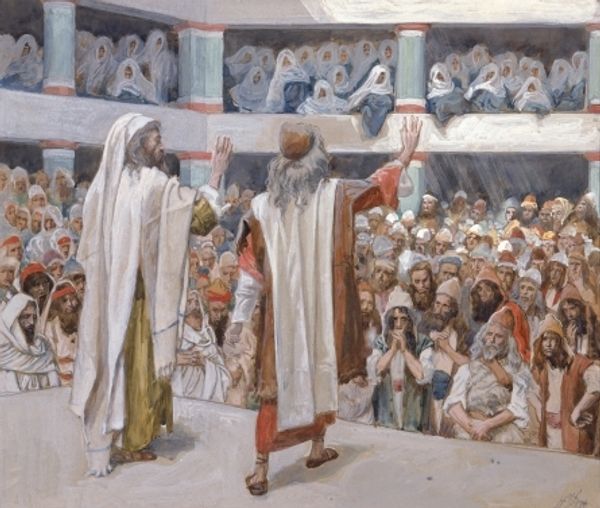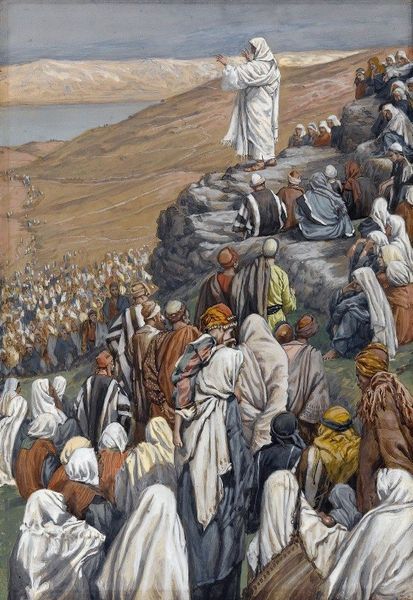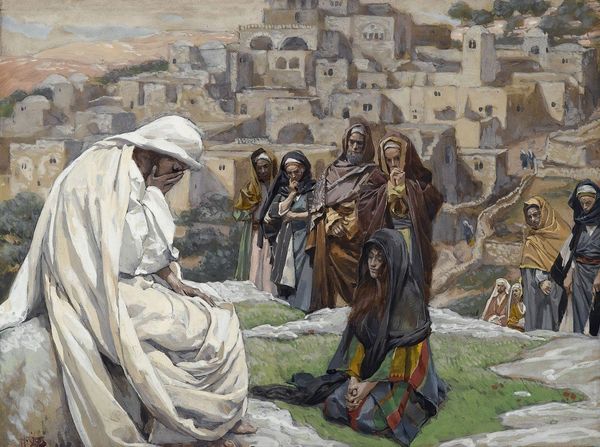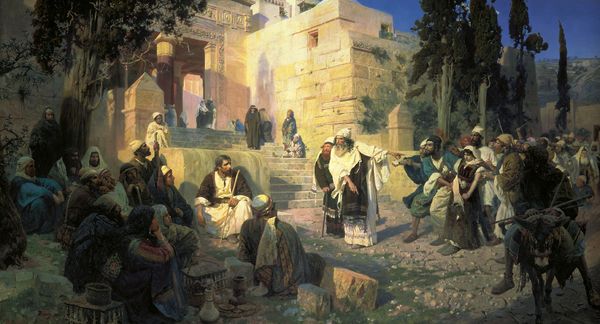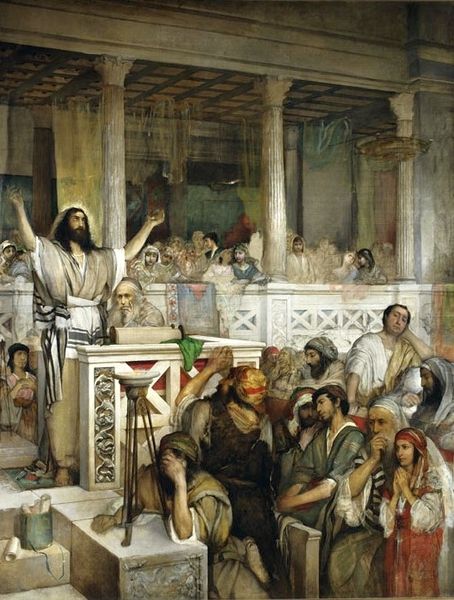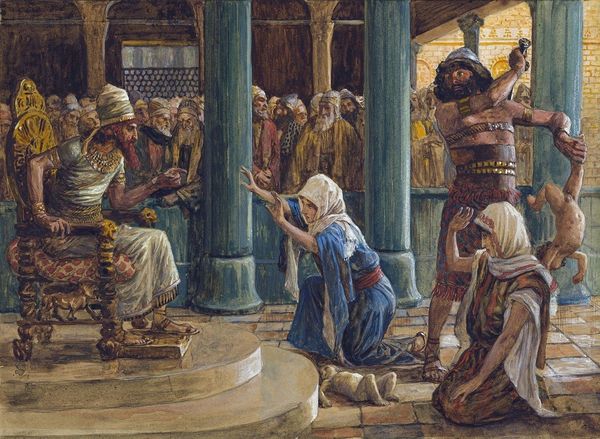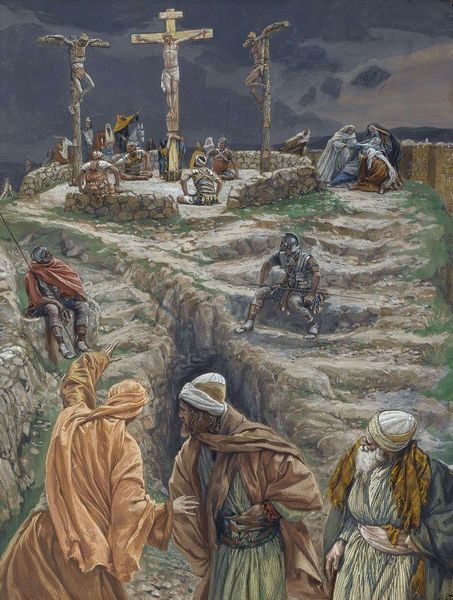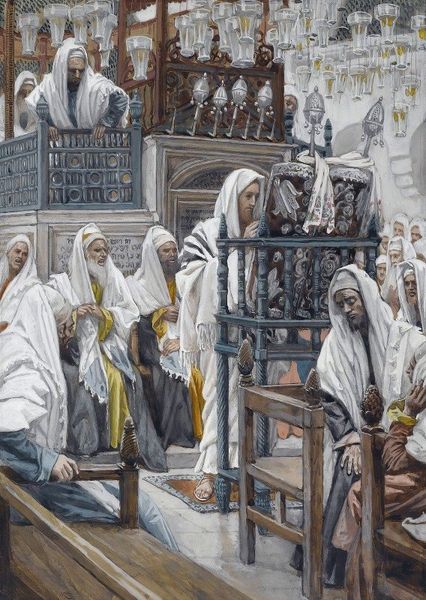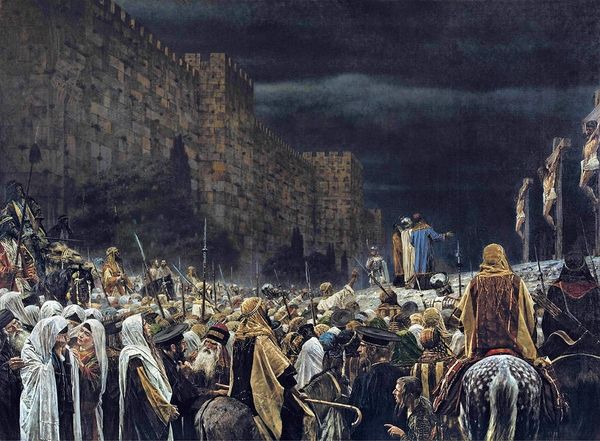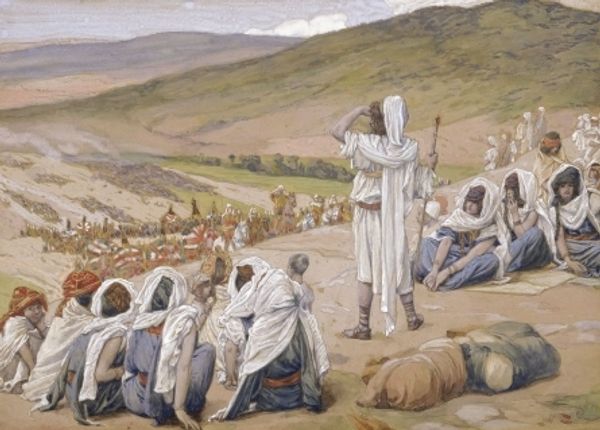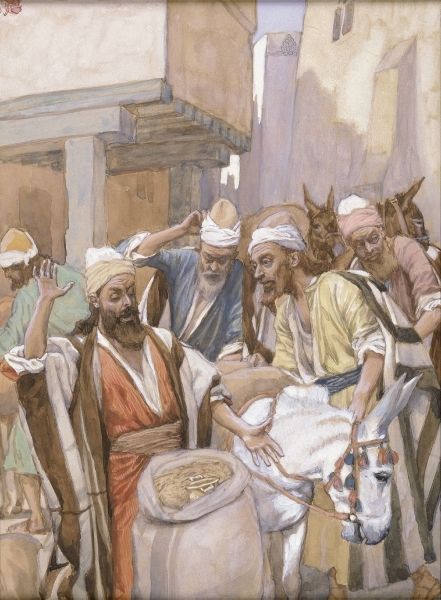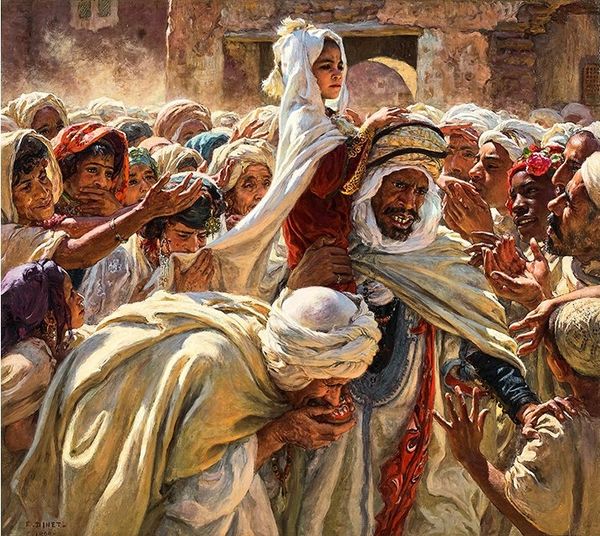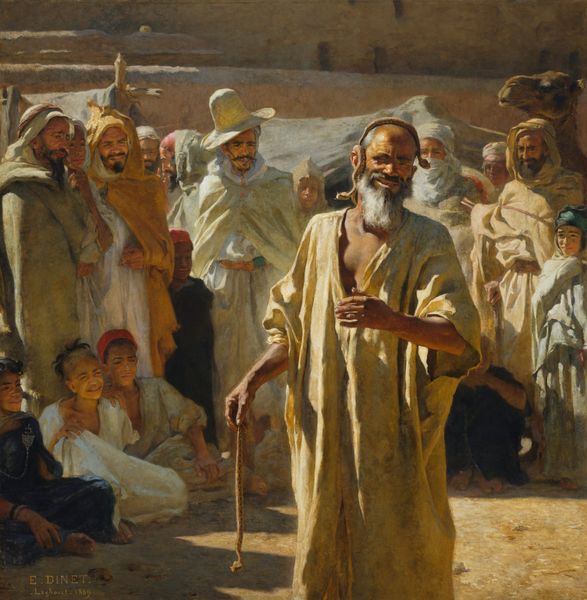
painting, oil-paint
#
painting
#
oil-paint
#
holy-places
#
oil painting
#
watercolour illustration
#
genre-painting
#
history-painting
#
watercolor
#
realism
Copyright: Public domain
Curator: James Tissot's 1902 oil painting, "Solomon Dedicates the Temple at Jerusalem," is before us. It depicts a pivotal moment in biblical history. Editor: My initial reaction is one of being overwhelmed by the sheer mass of figures. The muted palette contributes to a solemn, reverent atmosphere. You can almost feel the weight of the stone architecture. Curator: Tissot, as we know, was quite interested in depicting scenes from the Bible with a meticulous eye for detail, attempting to render the scene authentically. It’s also worth remembering the rising popularity of biblical archaeology at the time, and how that shaped popular imagination. Editor: That makes sense. Looking at the rendering, it’s fascinating to consider the labor involved—not just in Tissot’s studio, creating this densely populated canvas, but in the imagined construction of the temple itself. Think of the quarrying, the transport of those massive stones... It gives new weight to the scene. Curator: Absolutely. The monumental architecture signifies more than just physical presence; it symbolizes the intersection of religion, power, and politics in ancient Israel. The scale of the project broadcast the ambition and resources of Solomon’s kingdom. It also played a huge role in unifying people behind Solomon. Editor: Considering materiality, it would be easy to see the clothing and the vessels as simply props for the biblical image. However, a deeper materialist approach reveals this artwork as the culmination of both actual and illusory craft. Even the paints contribute to how meaning is made. Curator: It's interesting to see the revival of religious art that was in vogue at this time in Europe. You have to appreciate that his approach was quite different from the Baroque era of previous centuries. This painting gives a sense of realism, devoid of grandstanding gestures that you normally see from these paintings. It speaks to Tissot’s position and his intention to present the stories faithfully. Editor: It really does make you wonder about his choice to mute the colors. I am left to wonder whether the reduction was deliberate. In any event, thank you for these new insights. Curator: Thank you. It has been interesting thinking about the ways an old painting remains connected to its specific moment.
Comments
No comments
Be the first to comment and join the conversation on the ultimate creative platform.
